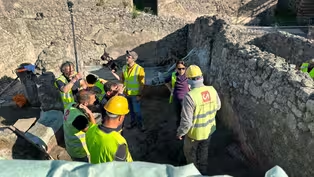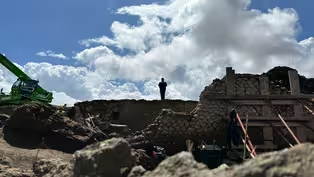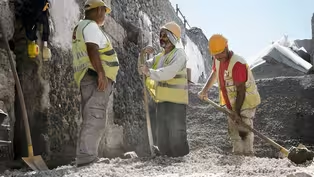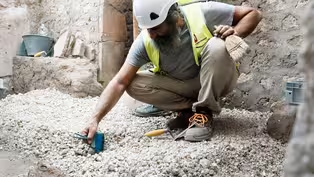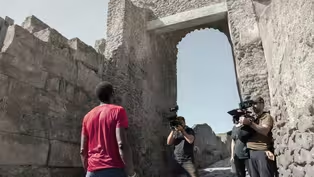
Professor Tuck Begins His Search
Clip: Episode 2 | 3m 2sVideo has Closed Captions
Professor Steven Tuck begins pioneering research looking for potential eruption survivors.
Professor Steven Tuck of Miami University begins a pioneering new research project looking for potential eruption survivors. He starts by visiting a newly discovered tomb that holds vital clues as to how many people lived in Pompeii in 79 AD.
Problems playing video? | Closed Captioning Feedback
Problems playing video? | Closed Captioning Feedback

Professor Tuck Begins His Search
Clip: Episode 2 | 3m 2sVideo has Closed Captions
Professor Steven Tuck of Miami University begins a pioneering new research project looking for potential eruption survivors. He starts by visiting a newly discovered tomb that holds vital clues as to how many people lived in Pompeii in 79 AD.
Problems playing video? | Closed Captioning Feedback
How to Watch Pompeii: The New Dig
Pompeii: The New Dig is available to stream on pbs.org and the free PBS App, available on iPhone, Apple TV, Android TV, Android smartphones, Amazon Fire TV, Amazon Fire Tablet, Roku, Samsung Smart TV, and Vizio.
Buy Now
Providing Support for PBS.org
Learn Moreabout PBS online sponsorship♪ NARRATOR: Now Professor Steven Tuck of Miami University is attempting to trace survivors in a pioneering new research project.
STEVEN (VO): Scholars have long thought there must have been people that made it out.
It's just that nobody ever went looking for them before.
NARRATOR: For the last decade, Steven has combed online databases of Roman inscriptions looking for clues.
Now, he's come to Pompeii to try to prove his theory.
NARRATOR: His first stop is a newly discovered tomb on the edge of town.
This Latin inscription holds vital evidence that Steven believes changes the thinking on how many people really lived in Pompeii.
So, this was found about four years ago.
You can still see, attached to the tomb, the remains of the pumice and the eruption material.
NARRATOR: While the owner's name is lost, the inscription describes his life in detail.
The dinners he held, the giveaways of bread, the gladiatorial games, the animal hunts he sponsored.
It's his entire life defined by his acts for the community.
NARRATOR: Most intriguingly, the inscription reveals a lavish dinner he gave for all the male citizens of Pompeii.
So we've got 456 dining couches with 15 men on each one.
NARRATOR: Knowing the benefactor hosted nearly 7,000 male guests, Steven believes he can work out Pompeii's true population.
STEVEN: Every one of these guys has families and wives and kids and enslaved people.
Which means that there can't only be 10,000 people in the community.
We think that this indicates probably a population of about 30,000.
This inscription tripled what we think the populace of Pompeii was.
NARRATOR: If 30,000 lived in the city, it means over 90% of Pompeiians are still missing.
STEVEN: People could have perished outside the city on the roads or on the coast, but with this vast, much larger number, there may have been thousands and thousands of people that made it out from the city.
There is a lot more people missing than we were aware of.
Video has Closed Captions
Clip: Ep2 | 2m 2s | Archaeologists begin to restore a fresco depicting the Greek myth of Achilles. (2m 2s)
Video has Closed Captions
Clip: Ep2 | 1m 37s | Archaeologists in Pompeii begin to reconstruct an elaborate, intricately painted fresco. (1m 37s)
Video has Closed Captions
Preview: Ep2 | 30s | An excavation in Pompeii unearths new rich finds, and the search is on for survivors. (30s)
Video has Closed Captions
Clip: Ep2 | 1m 19s | The archaeologists discover expensive marble furniture in the atrium of the wealthy house. (1m 19s)
Video has Closed Captions
Clip: Ep2 | 2m 20s | Professor Chris Jackson explains how Pompeiians might have survived the eruption of AD 79. (2m 20s)
Providing Support for PBS.org
Learn Moreabout PBS online sponsorshipSupport for PBS provided by:
